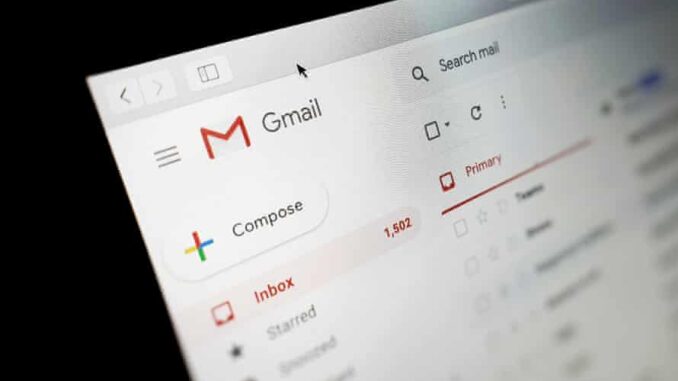
Don’t blame the medium for our inbox anxiety. The more fundamental issue is how work dominates our lives
I am about to defend the seemingly indefensible: email, the inbox, all of it. And yes, I’m offering this case at a time when it might sound especially unlikely. This is the season of holiday responder messages and out-of-office replies. The back-and-forth of delayed communications makes email an especially draining project during the summer.
I’m not unfamiliar with the paralysing anxiety that settles in when I see a notification that my unread messages total some ungodly number. I probably owe an email to a percentage of people reading this. (Sorry! Things are a bit busy!) And I’d love to never see the words “hope this message finds you well” again in my life. But the decentralised wonder that is email isn’t the cause of my stress; the real problem is work and too much of it, as relayed through these messages. When it comes to communications systems, email – a technology that’s 50 years old this year – is hard to beat.
Email is the product of a number of independently forged developments. In 1965, Tom Van Vleck and Noel Morris released a computer messaging program at Massachusetts Institute of Technology. As part of what’s known as a time-sharing system, users at individual terminals could message other users that were all connected to the same mainframe computer. Four years later, Charley Kline at UCLA and Bill Duvall at Stanford Research Institute contacted each other in the first Arpanet connection. This was a publicly funded network system powered by packet-switching – a method of data transmission that would become the basis for the internet. Their exchange could be compared to two people with walkie-talkies – you could only reach the other person holding the device.
In 1971, the Arpanet programmer Ray Tomlinson put these advances together when he sent a message that most closely resembles email as we now know it. It combined the Arpanet packet-switching network connection with the user-to-user communication that had been developed for time-sharing systems. His program employed the “@” symbol to distinguish the recipient as a specific user at a specific computer location. This messaging system grew popular, and over the following decade developers refined email to include features such as folders, replies (Re:) and autoresponders.
To this day, email is decentralised and interoperable, which distinguishes it from commercial mega-platforms. Facebook messages can only be sent between Facebook users who are logged into the platform, but if you have a Fastmail account you can write to anyone on Gmail or Hotmail (yes, people still use Hotmail), or their work or university email accounts.
There’s no Mark Zuckerberg of email. Tomlinson, who died in 2016, never built a digital fiefdom on top of it. While Google’s Gmail is an undeniable giant of email (one that collects data and sells ads against your correspondence), email itself remains noncommercial. The technology is public. You own your own email messages. Maybe you could take or leave that company-wide reply-all disaster about a printer jam down the hall from 2013, but for the messages you do value, you can always transfer them to another email service provider.
Most inboxes are filtered with anti-spam techniques. These measures are in place to counteract unwanted junk and do not fundamentally alter the content that you see. There are no opaque proprietary algorithms that prioritise emails from influencers at the expense of people who are, well, not influencers. Emails don’t go viral. Perhaps it would be more efficient if we could “like” an email, rather than respond with a simple two-word “sounds great” message, but, personally, I’m content never to have to worry about whether my inbox has enough likes.
For decades, email has been a robust and reliable communication method. This stability is why, in recent years, it has become the primary manner of professional correspondence. Since email is directed just to you – the user – someone with a task just for you is very likely to send it over email. It’s these mounting demands and favours and requests that arrive in one’s inbox that people hate – the work, not the email itself.
Text messages – which tend to be more casually exchanged – don’t conjure up the same dread and hatred as email. The private messaging available on social networks such as Twitter and Instagram is also generally used for quick, personal communication, much like AOL Instant Messenger and ICQ before it. You aren’t likely to see fussy greetings before messages like: “I hope this DM slide finds you well.” Social media posts also conjure up different emotions. No one would use Twitter at all if it incited the same feelings as email. Tweets are broadcasts to many, rather than demands on your undivided attention or requests for you to complete a task.
Email – built collaboratively for the public – is just another casualty of work that demands 24-hour availability and cordial performance. It’s an example of how “things we used to keep for ourselves”, as Sarah Jaffe writes in her book Work Won’t Love You Back, “are suddenly in demand on the job, including our friendships, our feelings, and our love”. Those who were online in the 1990s and 2000s might remember when the messages in their inboxes were delightful, curious and thoughtful. The joys of email were easier to appreciate when users primarily communicated with friends and family through it.
There are tricks that can make email manageable. I often search my inbox for the word “unsubscribe” and ruthlessly click on the link inside every message that pops up. But the fundamental problem remains the same. A world free of email might sound like bliss, but let’s be more specific: the ideal world is one without work.
- Joanne McNeil is the author of Lurking: How a Person Became a User


Be the first to comment